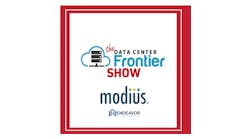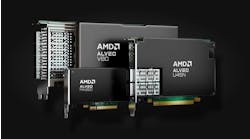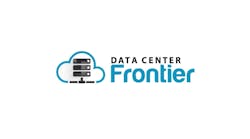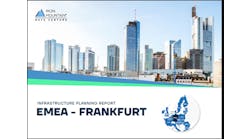Outsmart Job Board A.I. Bots So Your Resume Gets to The Right Person!
We have all read numerous articles by now and have heard this at basically every data center conference – that the data center industry has doubled in size in the last 4 years according to JLL’s US Data Center Report Midyear 2024 and that power and people are the 2 biggest issues as our industry grapples with the AI Movement. I often get asked by industry peers to review their resume or help a friend that is looking for work and wants to join the data center movement or help guide a Navy Nuke or someone from the Army transitioning into civilian life and is hoping to leverage their skills for their next endeavor. My goal with this article is to offer some tips so that your resume gets call backs, and to walk through the most effective way to create and present a resume for those who want a deeper dive.
Some tips to for applicant tracking systems filtering
Applicant Tracking Systems (ATS) use various methods to filter out the multitude of resumes they receive daily. Unfortunately, this does sometimes result in many qualified applicants being passed over for simply not having an optimized resume. The resume black hole that can come with using an ATS that sometimes uses AI for assessments and parsing of resumes especially when it comes to applying to a job using the big box job sites (see these links for examples: (LinkedIn, indeed). When parsing resumes it looks for ones that list those skills specifically. For example, a Critical Operations Technician won't flag if they are looking for a Data Center Engineer, unfortunately. Here are some tips and tricks that can help you stand out and not be left on the cutting room floor when applying for your next position.
- Keywords: Your resume should include keywords that an employer is looking for. You can easily find relevant keywords by searching the job description for the job for which you are applying. Use the exact words listed in the job requirements but avoid constant repetition. Ensure you are using any words specific to your industry. These words should also be relevant to the role that you performed and shouldn't be shoehorned in where they don't make sense.
- Formatting: Having multiple tables, fonts, images, pictures, or even styles of writing (having someone else write your summary where they reference you as Mr. Or Ms. Last name) can make it harder for these systems to parse your resume, causing them to be knocked out.
- Experience: Make sure your resume is geared toward the job you are applying for by highlighting aligning experiences. Don’t forget that not only will your resume be potentially parsed by A.I. but, it will actually be read by someone with experience in your industry. These systems will consider the amount of relevant experience you have, and the hiring manager will look at the content itself. Are you applying for a sales position after doing mostly field work? You should highlight any sales responsibilities that you had in earlier positions, even if it wasn't, specifically a sales role. This way you can speak about your experiences more when it comes to the interview.
- Dates: Leaving off dates on your resume is a bit of a red flag in most circles. It makes it seem as though you are trying to hide a particularly short stint or obfuscate the truth about the length of time worked at a particular position. Accurate dates are a measure of your experience level and the work's content, so it is important to include these and format them correctly.
- Social media: Ensure that your public social media (especially your professional facing ones) are aligned with your values and goals. Companies and recruiters are increasingly using both search engines and social media to look at candidates to ensure that they are a good fit for their company. Align your resume with your professional social media platforms and any job boards that you may be using (LinkedIn, indeed, etc.).
Let's jump into resumes – what works and what doesn't
There are a lot of dos and don'ts. As I have been reviewing resumes daily for over 25 years (17 of those years have been reviewing data center focused resumes) I have an idea or two about improving your resume that I would like to share.
First, we will start with some easy don’ts:
- Don’t add tables, use multiple font types, have too many different font sizes, don’t write your experiences in the incorrect tense: earlier jobs written in past-tense and present job written in present tense.
- Don’t include I or me. The rule of thumb is that resumes are written in first person implied.
- Don’t forget your contact info – like your cell phone number, email, and LinkedIn link; Don’t forget you can shorten your LinkedIn link – check your settings; Don’t forget to clean up your social media – we check that too!
- Don’t include your references on your resume (upon request only) as they might be recruited as well. Don’t forget to check for typos. If necessary, take some time away and look at it with fresh eyes in an hour or two.
- Don’t forget to add in dates - month and year are sufficient - no need to put the day. Also, if your dates are incorrect on a resume, that can be fixed in future resumes, but most importantly, it must be accurate when filling out a background check otherwise that job that you are applying for could be in jeopardy.
- While this feels like a no brainer, don’t provide too much info if you have an NDA. These are put in place for a reason and can have serious consequences if you were to break them. Make sure you review them thoroughly before signing so you understand what is expected of you.
- Don’t be rude or disrespectful to your coworkers, those you report to and those who report to you, as well as vendors that support you. This is good general advice, but is especially valuable in such a tight-knit community as ours. I’ve seen many times that people who you once worked with are now your customer or your next boss.
- Don’t include schools that use life experiences as they are typically not accredited. Don’t lie about a degree you do not have. One of the remarkable things about our industry is that sometimes a degree isn't even needed for some jobs, and from there you can work your way up.
- Don't include project lists in or as a resume. It should be its own attachment, where possible. If you want to highlight a few important projects with a specific experience, list it under that experience in your resume but make sure to keep it brief.
Here is my outline for a resume
What should my resume look like?
Personally, I’m a fan of Arial 10 font and font size – except for the name which is always a little bigger font size (centered and bold). Under your name is your target city (for Relos) or current city, phone # email and LinkedIn link. I like perfectly justified on both sides, so the resume is appealing visually.
Make sure you have an Objective especially if you are new to the industry or working world. Summary helps if you are more seasoned. Education is on top of the resume if you recently graduated, otherwise it's at the end of the resume.
It's often prudent to give employers a snapshot of the skills you have with a comprehensive Skills list. These should only be skills that are relevant to your field of work. For example, while it's nice that you know Brazilian jiu jitsu, it's not at important as listing Eaton for UPS (Uninterruptible Power Supply) if you are a Data Center Facilities Engineer and that is what you are skilled at. Focus on your experience with critical infrastructure like HVAC, electrical systems, or generators. If you've worked with specific systems (like Eaton UPS systems, or Schneider Electric BMS), include those keywords.
The main part of the resume is Professional Experience. Keep it simple – company and location listed on left and dates on the far right. Your title would be on the next line under the company name. Have bullets next that explain your accomplishments and achievements. For example, list companies that you may have landed, revenue that you have brought in, if you are over quota (if in sales), etc. List projects you are working on, giving as much detail as possible with respect to any NDA that might be in play. What was your role versus what the team did on the project? Did you create efficiencies? Did you save the client or company any money, etc.?
Your resume is your highlight reel. Start the bullet with a verb and not with an I. Try your best to avoid using “responsible for” repeatedly. Information in this section lets potential employers know that these things were part of your responsibility. Avoid the pitfall of copying and pasting the same responsibilities for each job, highlight the experiences gained from that position, even if they were very similar in description. Paint the picture with an example like, “Maintained and optimized a 300,000 sq. ft. data center, managing critical infrastructure including cooling, power distribution, and physical security systems.”
Remember to always keep your current employer in the present tense. All other experiences are past tense. If your employer is acquired and you stay with the new employer – that isn't a new job: Current employer / Purchased employer is how it should look. For project managers, create another document for project lists to keep the resume short.
After you list all your professional experiences in order, starting with the most recent, next you would go on to listing your Education, as stated earlier. Format this like your professional experience, with the name of your college listed first with the date of your graduation date on the far right. Underneath would be the name of your course of study, i.e., Bachelor of Science, Electrical Engineering. If you have any prominent academic achievements, feel free to put them underneath your course of study as bullet points.
If you do not have any secondary education, or after you already list it, you list any licenses and/or certifications you have gained over your career. Mention industry-specific certifications such as Certified Data Center Facilities Professional (CDCMP), but only if you have the certification!
Finally, end your resume with any professional organizations that you are affiliated with officially.
This provides a neat and clean format that makes it easy for any ATS to parse.
General Data Center Resume Tips!
Here are some examples
- Reduced PUE from ___% to ___% by introducing e.g.: energy-efficient cooling systems, saving the company $XXXX annually
- Lead engineer on the installation of a #MW backup generator, ensuring ___% uptime during operational hours
- Include project management certifications like Project Management Professional (PMP) or Certified Data Center Design Professional (CDCDP)
- Project Complexity: Highlight how you manage complex projects with multiple stakeholders, tight deadlines, and adherence to strict standards (Uptime Institute’s Tier Standards, for example)
- Managed the construction of a ___MW hyperscale data center from groundbreaking to commissioning, ensuring the project was completed ___ months ahead of schedule and ___% under budget.
- Oversaw the migration of ___ servers to a new data center facility with zero downtime, while managing a cross-functional team of ___.
- Successfully integrated new AI-driven cooling systems, reducing overall data center energy consumption by ___% while improving operational efficiency
You’ve completed your resume. Now what?
You should always ensure you are making note of which jobs you are applying for. Do your research on any potential future employment opportunities, learning about the company culture, and how employees view the company. Websites such as Glassdoor, TeamBlind, and Levels.fyi are some great ways to hear from past and present employees, and even learn about realistic pay potential.
Social media is more important than you think, as companies often advertise jobs on these sites. The best person for the job should always get it, but if nobody knows who you are, unfortunately you might not get the chance. Update those LinkedIn profiles! Also, keep your professional online footprint clean and respectable. You should ensure that your digital footprint is representative of your best self by doing a cursory search. Nothing is worse than having an offer fall through due to you posting a “hot take” about something that shouldn't be shared in a professional setting.
Social media sites are a fantastic way to network and see what is going on in your area. Where else can you potentially connect with high level CEOs or others in your field working across the country? Don’t just blindly apply – for example: if you want to ensure your resume gets into the hands of the right people, connect with someone from the company. If you don’t have connections, look for people who do. LinkedIn is my go-to for making connections. You can do research on Facebook, X (formally Twitter), or Instagram as well. And of course, if all else fails, use a recruiter that specializes in your specialty.
In conclusion, creating a resume that stands out in the competitive data center industry requires attention to detail, a strong understanding of your own skills, and a willingness to adapt. By following the tips and guidelines outlined here, you'll be better equipped to craft a resume that not only passes through applicant tracking systems but also catches the eye of hiring managers. Remember, your resume is a living document, one that should evolve with your career. Stay proactive, keep learning, and always be open to feedback. As such, we would love to hear from everyone what is working for you and any tips you might have to share! Your next great opportunity could be just around the corner, so put your best foot forward and let your resume do the talking.

Peter Kazella
Peter Kazella is Principal Data Center Recruitment Advisor for Pkaza – Critical Facilities Recruiting. Peter has over 26 years of experience supporting diverse industries and business disciplines and has experience recruiting in both the US and Canada.
Pkaza has been recruiting in the critical facilities industry since 2006. We work with professionals that come out of the hyperscale, colo, enterprise, service firms, OEM, and military. Our area of expertise is typically MEP (mechanical, electrical, and plumbing) + controls. Our focus is construction, commissioning, engineering / design, facilities operations, sales and executive level roles across the US and Canada. Learn more about Pkaza and Peter Here.







